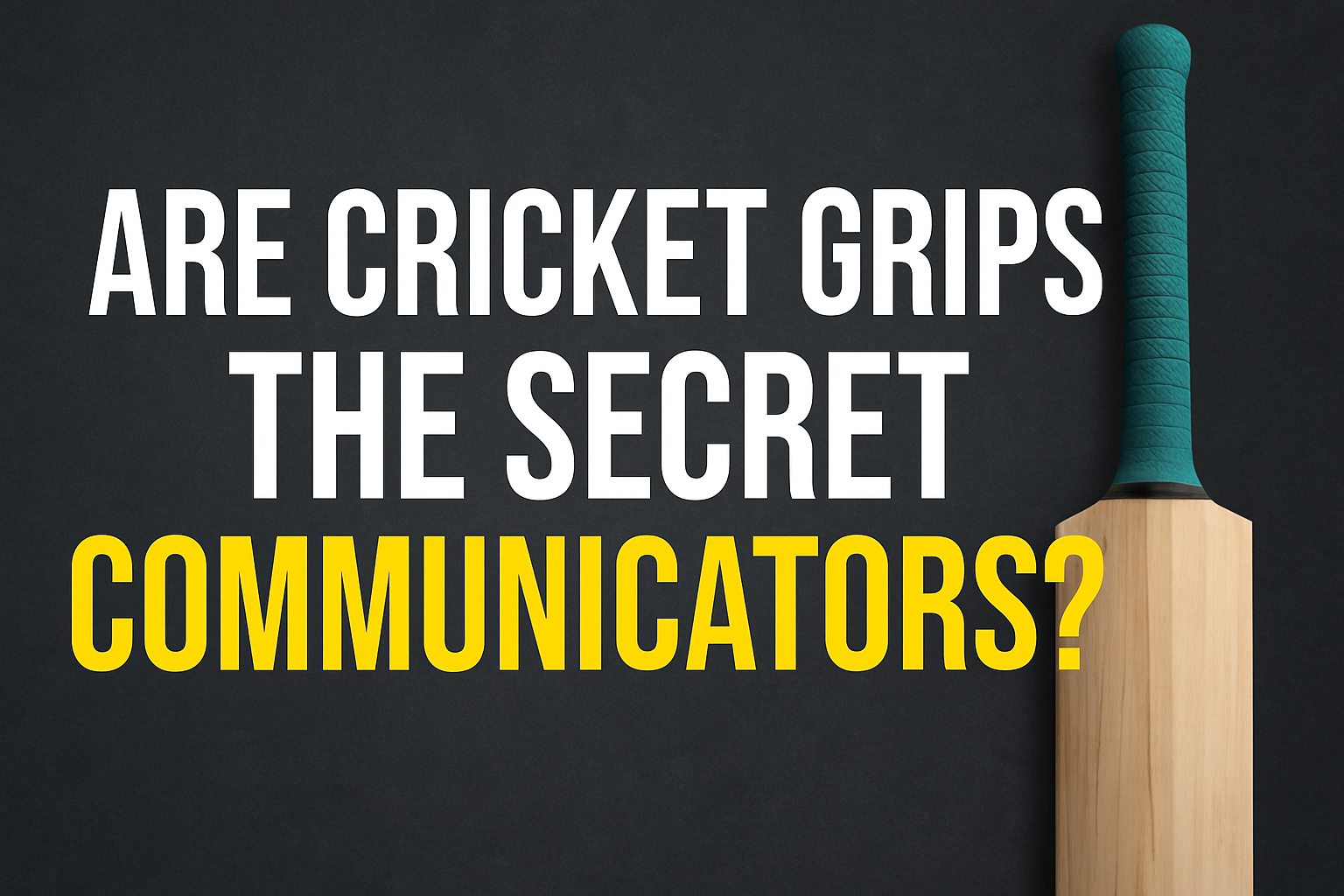When a cricket ball hits your bat, the connection is more than just physical — it sends a silent message through your hands. That subtle vibration traveling up the handle isn't random. It's full of information. What many players overlook is how the cricket grip — that thin layer wrapped around the handle — can either enhance or dampen these vital signals.
Let’s dive deeper into how your bat grip can quietly shape your reaction time, performance, and feel during a match.
The Language of Vibration
Every shot produces a unique feedback wave, depending on:
-
Where the ball contacts the bat
-
The speed and force of the impact
-
The structure and material of the bat itself
The moment the ball strikes, vibrations travel through the blade into the handle. These micro-signals tell your hands how well you connected. Was it sweet? Was it off-center? Did the ball hit low or high?
Good players subconsciously read these messages. It’s part of how they instinctively adjust their technique without even thinking.
How the Grip Changes the Conversation
The cricket grip isn't just for comfort or appearance. Its thickness, texture, and material change the way vibration is transmitted.
-
Thicker grips absorb more vibration, making the bat feel softer but muting subtle feedback.
-
Thinner grips pass more vibration through, allowing players to feel finer differences — but sometimes making mishits more painful.
-
Textured grips (like chevron or ripple designs) may also alter how clearly and quickly the signal travels to your hands.
Choosing the wrong type of grip can be like wearing gloves during a phone call — the message might not come through cleanly.
How Vibration Affects Reaction Time
In high-level cricket, milliseconds matter. The sooner you detect a bad connection or a mishit, the faster you can react, adjust your stance, reposition your hands, or prepare for a second shot (like a quick single or a defensive push).
If your grip blurs the feedback:
-
You might recognize mishits slightly later
-
You might feel less confident judging how far the ball will travel
-
You might overcompensate in future deliveries, creating timing errors
In contrast, a well-matched grip helps you build sharper instincts, cleaner footwork, and faster recovery after each ball.
Finding the Right Grip for Your Style
There’s no one-size-fits-all answer. Your ideal grip depends on your playing style and sensitivity.
-
Power Hitters often prefer thicker grips that cushion big impacts.
-
Touch Players (like technical openers) often choose thinner grips to maximize feedback.
-
All-Rounders may opt for medium grips that balance comfort and sensitivity.
Experimenting with grip styles during nets can make a big difference. Sometimes even layering two grips — called "double grip" — can change the feel entirely.
Maintenance Matters Too
Over time, grips lose elasticity, thin out, or become slick. Worn-out grips:
-
Reduce vibration clarity
-
Cause subtle slipping, affecting your bat control
-
Increase hand fatigue over long innings
Regularly replacing your grip ensures the best possible "conversation" between bat and brain.
Cricket bat types, Cricket equipment in usa, Cricket equipment store, Cricket gloves, Cricket helmet, Cricket kit bags, Cricket retailers, Durable cricket gloves, English willow bats, Icc approved helmets., Kashmir willow cricket bat, Latest kashmir willow bat
